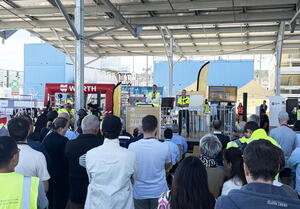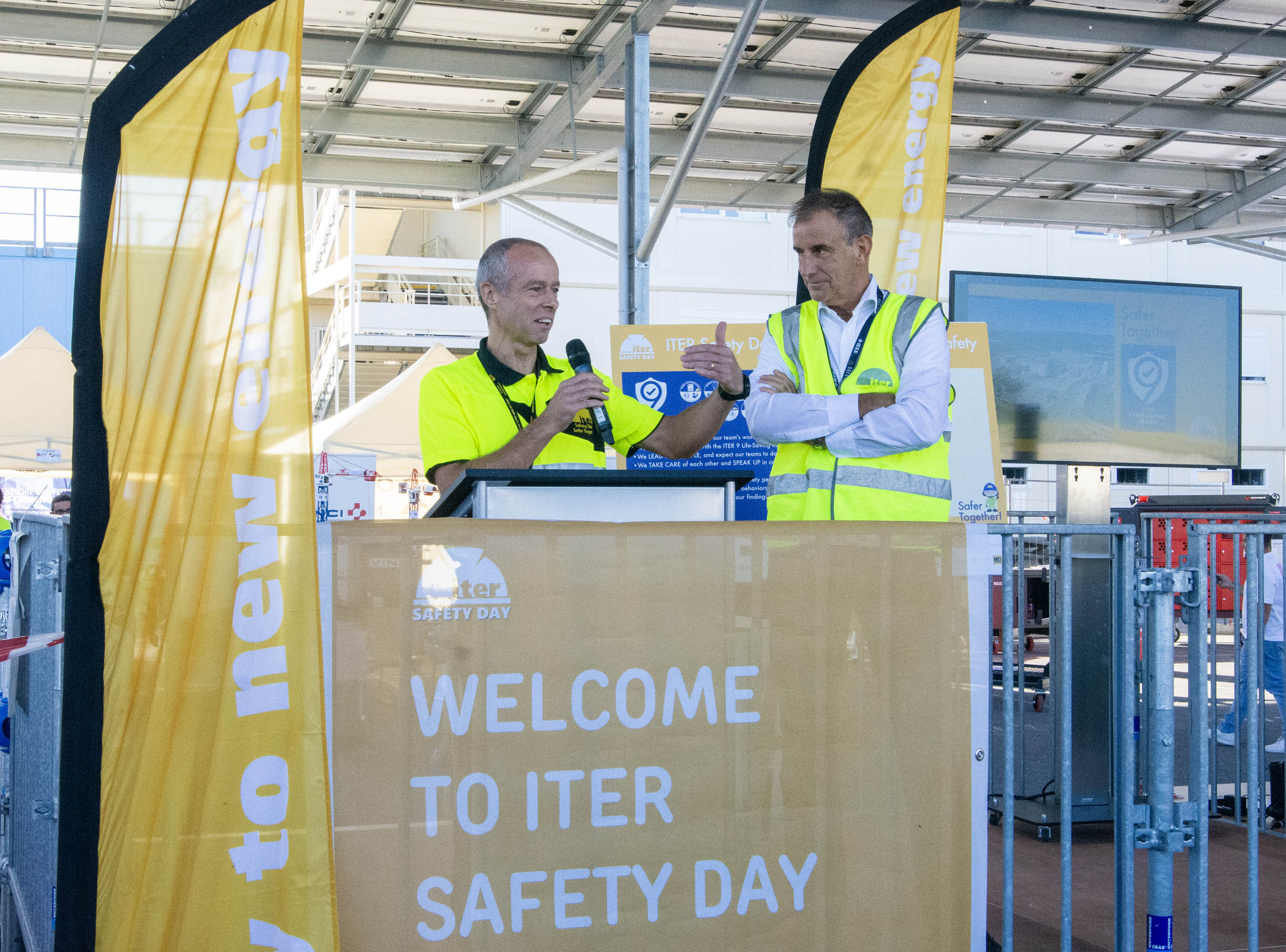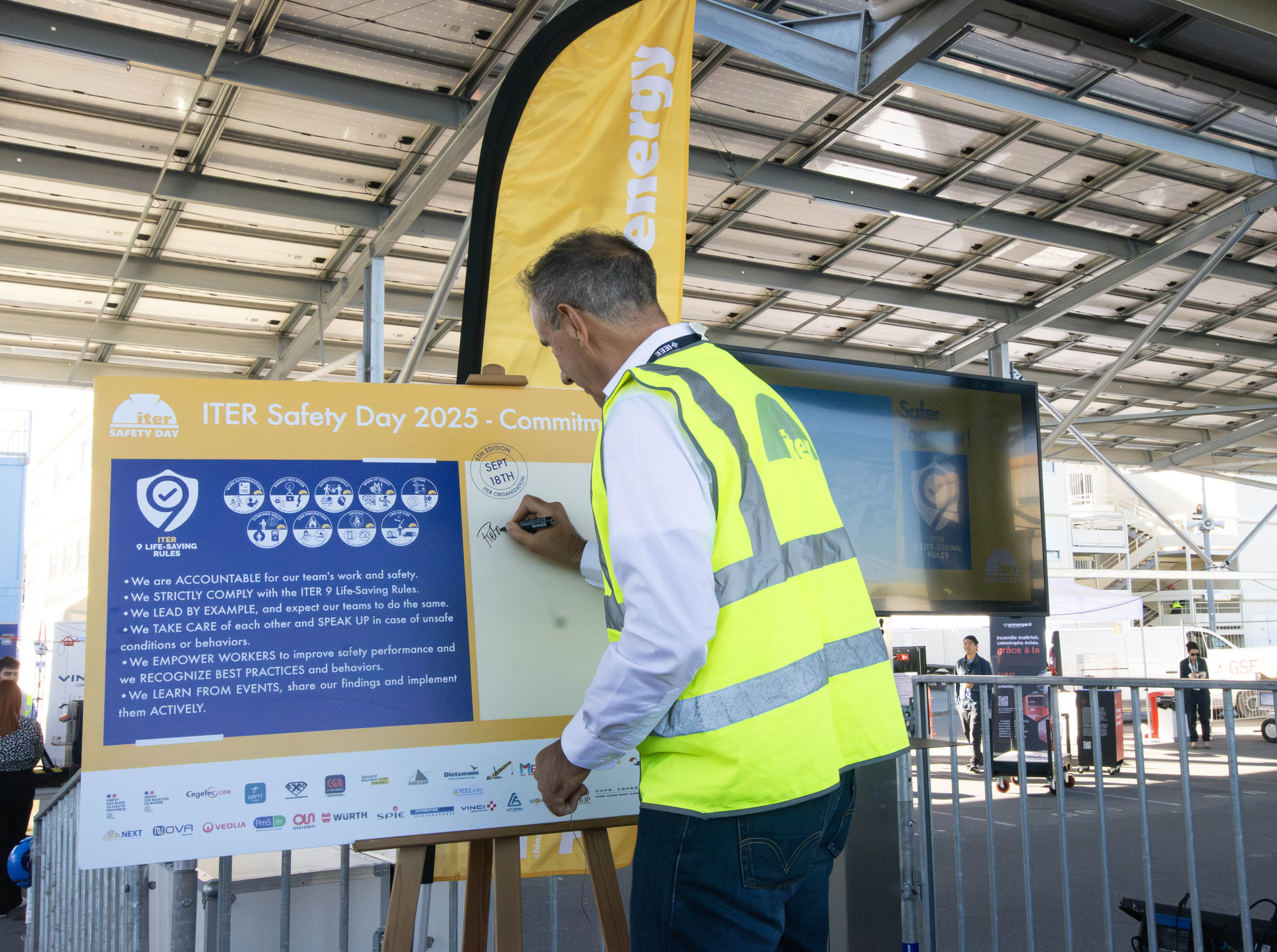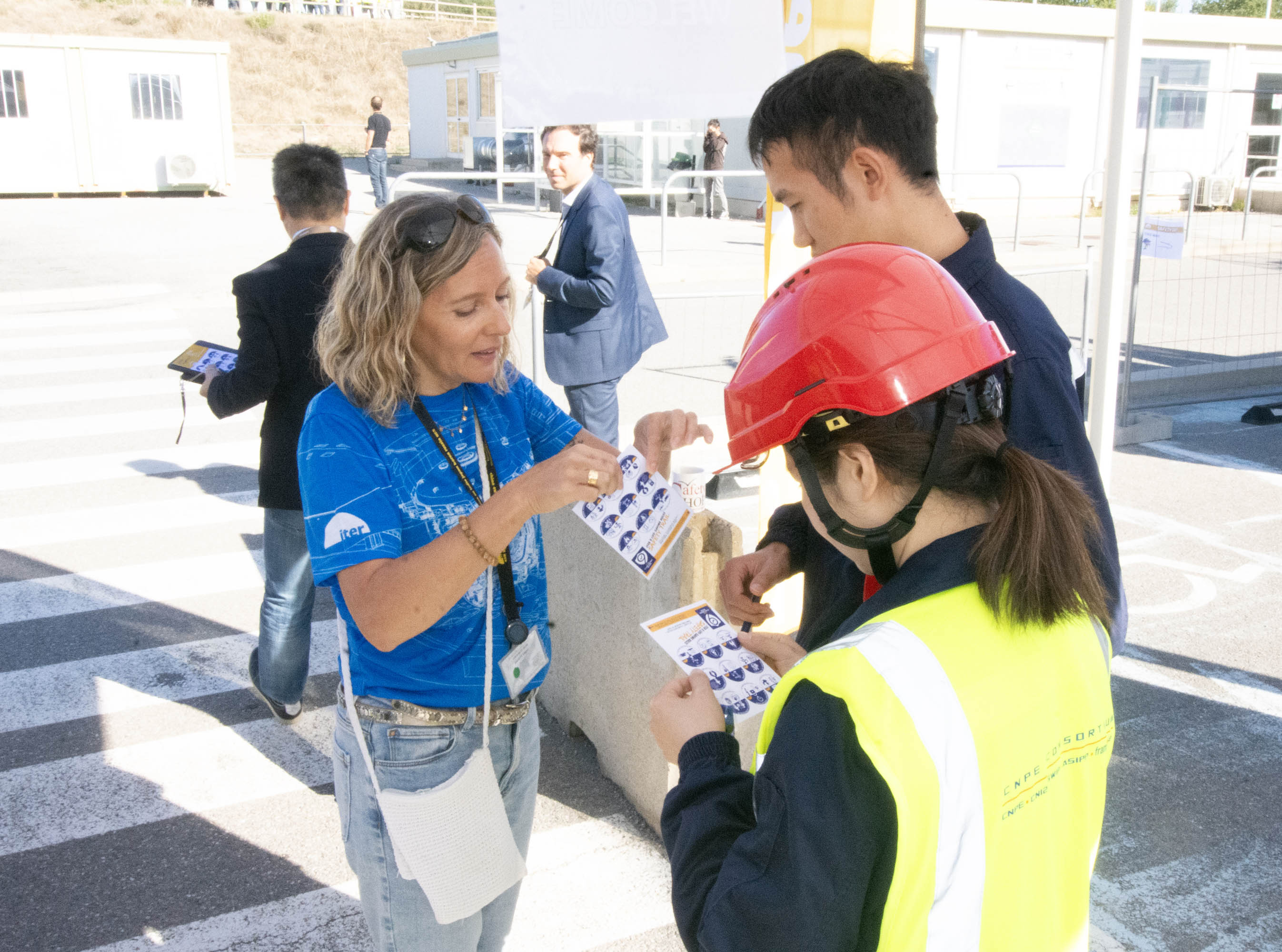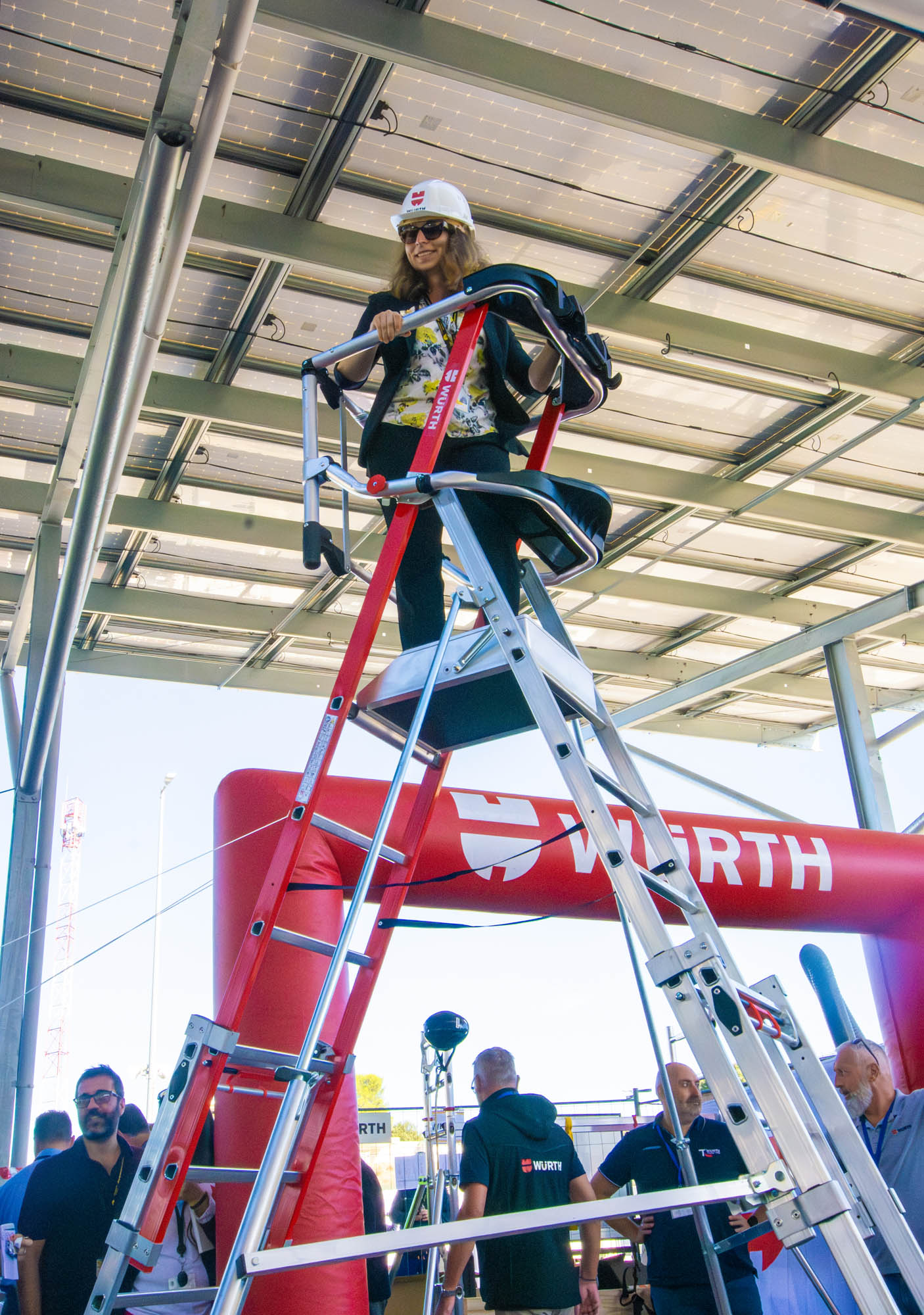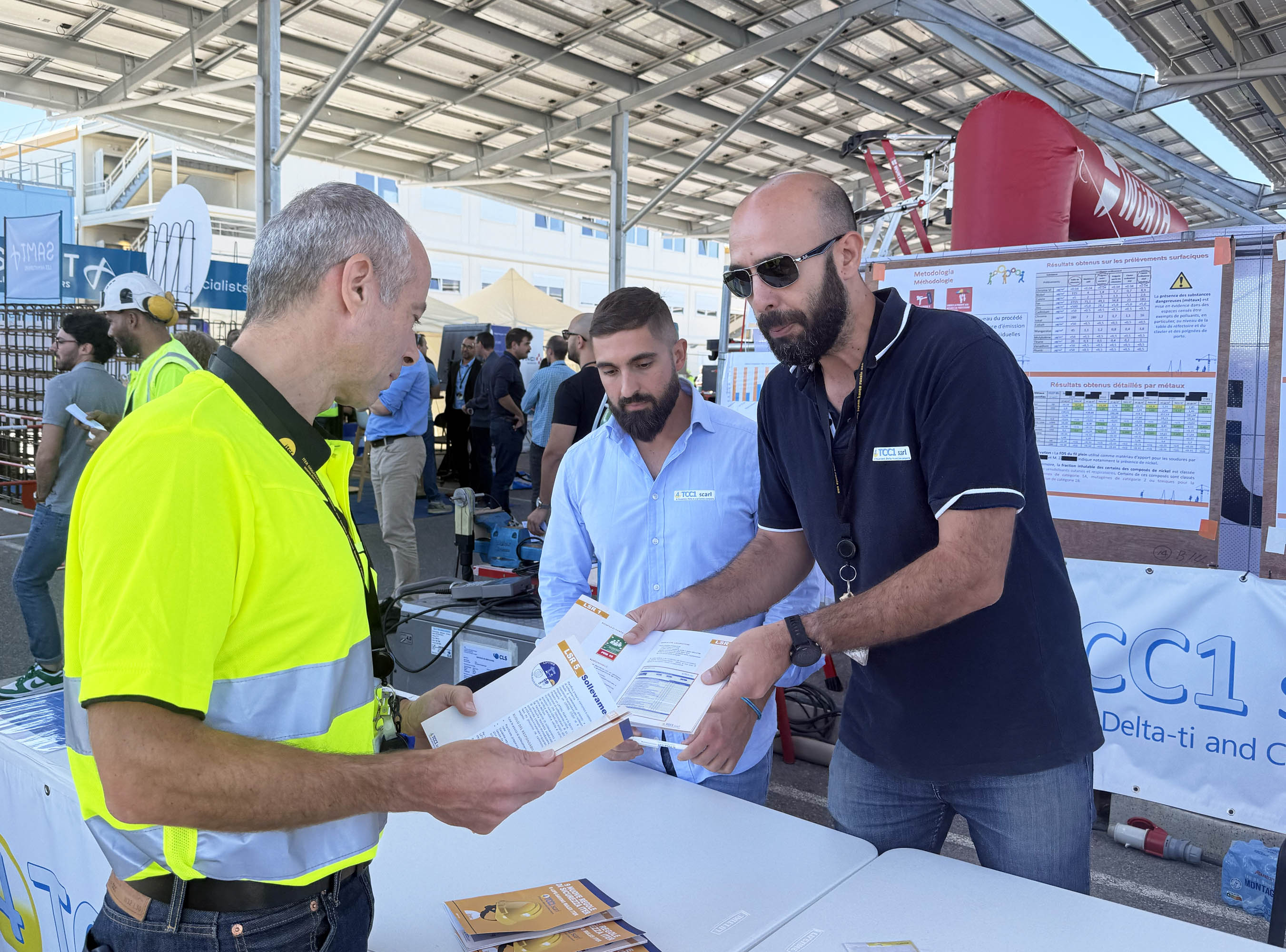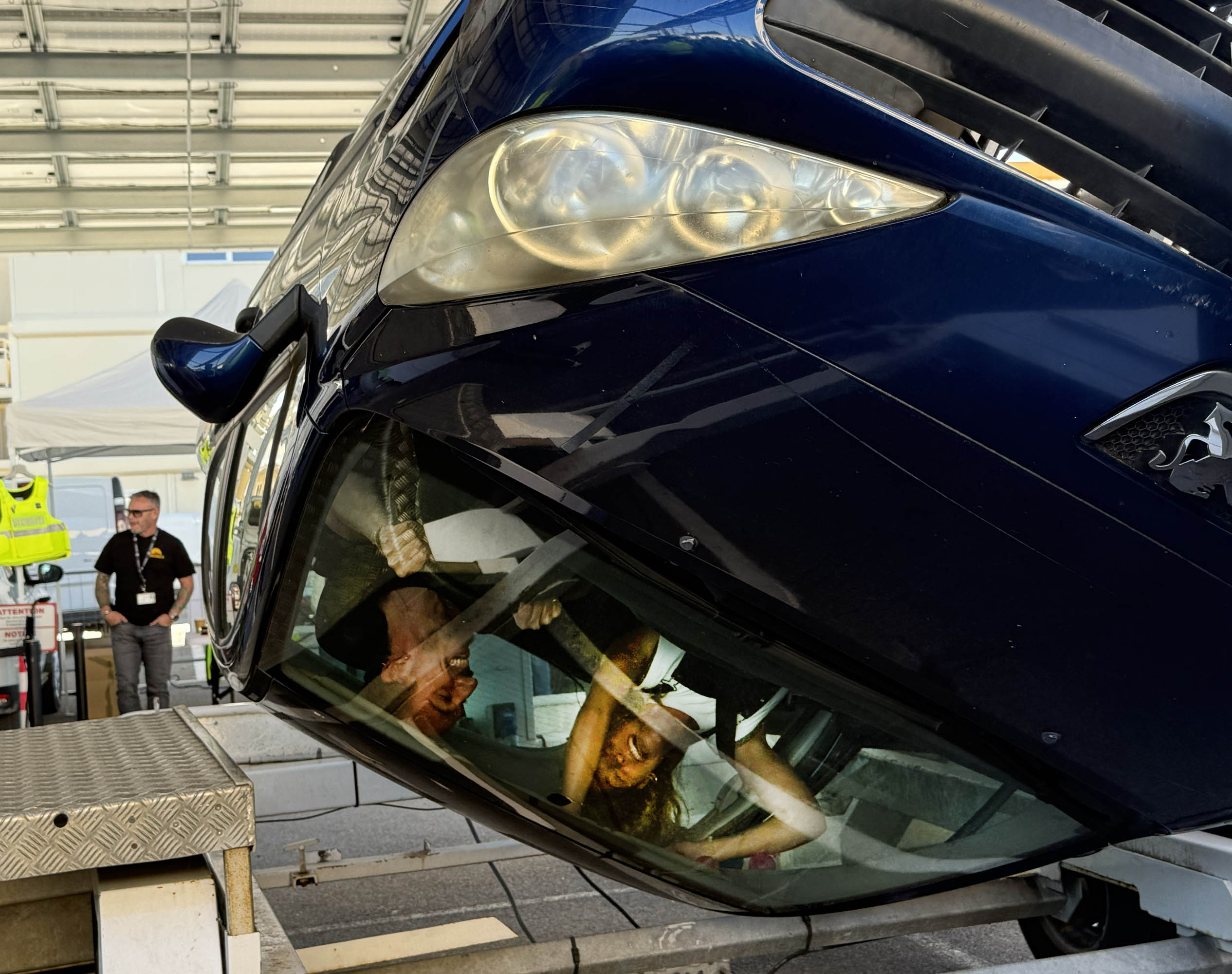A holistic vision for safety
ITER’s fifth annual Safety Day was the occasion to promote a global safety philosophy and introduce a revised system of day-to-day safety rules for the worksite.
“We cannot discuss the safety of nuclear fusion without being recognized as a world-class safety project,” emphasized Gilles Perrier, ITER’s Head of Safety and Quality, as he welcomed ITER staff and contractors to the Safety Day event on 18 September. “How can we say we are building a virtuous machine if we aren’t virtuous when respecting safety rules and regulations?”
In this spirit, Safety Day was used to publicize the new ITER 9 Life-Saving Rules program for on-site safety and security. Previously, ITER had 12 Golden Rules for Safety Enforcement, but Perrier and his team began revising this program last year to hone it down to 9 rules that are easier to understand and can be more efficiently enforced. (See sidebar.) The new rules were introduced this summer and went into the compliance phase this month.
“These rules are not simply advice, they need to be followed,” insisted ITER Director-General Pietro Barabaschi during his opening remarks. “It’s very important that we maintain our good safety record and, if anything, that we improve it because our number one priority is simply to return home to our families and friends safely. So, let’s look at this new safety booklet and let’s read it every day.”
Safety Day has been organized since 2021 as part of an effort to promote a culture of safety, raise awareness about best practices, and reinforce the message that safety is a core value and not just a compliance requirement. ITER’s current safety records show a Lost Time Injury or LTI rate of 4.5—which corresponds to an annual average of 7.4 workers suffering an injury with lost time, per 1,000 employees. This rate is good for the construction sector but there is still room for improvement as compared to other best-in-class industries.
So far in 2025, there have been 20 lost-time incidents at the ITER site. That is slightly higher than the 18 incidents recorded at this same time in 2024, but lower than previous years. Jeremy Guigon-Boyd, the responsible officer for Safety Culture Improvement and Human & Organizational Factors at ITER and the organizer of the Safety Day event, says that although results are improving, it is important to show caution: “Despite the year-on-year decreasing trend, and even if we are doing well compared to the standards of other industries, there is room for improvement. These statistics are more than numbers—they represent people, and we don’t want anybody to suffer an injury.”
While 2025 has seen no serious injury at ITER, there have been what are described as “high-potential near misses.” For example, in May 2025, a collision between a 750-tonne crane and a maintenance crane resulted in a piece of equipment falling more than 40 metres to the floor, which could have had severe consequences for team members present in the vicinity of the accident.
Safety Day continues to grow as part of ITER’s holistic vision of safety. In 2024, 30 subcontractors and ITER departments had information booths and 1,700 people attended the event. This year, there were 37 information booths and—despite a strike in France that reduced the number of personnel on site—the attendance was the same. Participants were encouraged to follow a safety trail that put the 9 Life-Saving Rules in the spotlight with activities and demonstrations on working at height, safe lifting practices, and driving responsibly among others.
You can download a poster of ITER's Life-Saving Rules here.
See a video of the event here.

